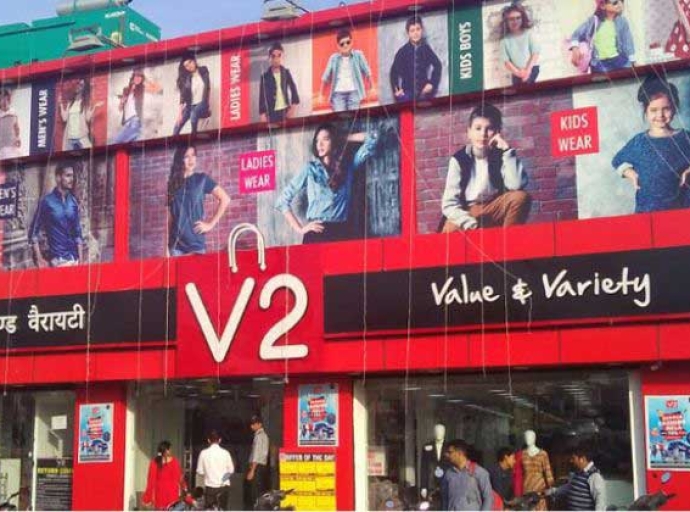India's Fashion E-commerce: Unprecedented Growth

17 July 2023, Mumbai
Social shopping isn’t exactly new as an e-commerce technology that uses a shared social network of friends and contacts.
It replicates an individual’s shopping experience of being with friends or those who influence their choices – suggestions, recommendations, validations – all real-world influences, now online.
Preview
Social shopping revolutionizes e-commerce by creating a shared network of friends and influencers that replicate real-world shopping experiences, now online. It empowers fashion retail through metrics and engages users on platforms like Facebook, Instagram, and TikTok.
This shift blurs the line between online and offline shopping, catering to evolving consumer expectations and enabling informed decision-making.
Digital adoption; Collaboration, technology adoption, and personalized touchpoints enhance the online-offline experience, while social commerce drives engagement, seamless shopping, and trend influence. It's a paradigm shift for fashion retail, making shopping exploratory, bespoke, and enjoyable.
Technology is an enabler
For fashion retail, this technology has been very empowering as these come with metrics required to capture impressions, engagements, reach, and sales, all at a go.
Facebook, TikTok, Instagram, Snapchat, Twitter, and Pinterest among others continue to engage users with relatable content, making them spend hours scrolling through their feeds.
The Emergence of Social Media
And as the just released ‘The State of Fashion 2023’ McKinsey & Company and The Business of Fashion report suggest, this network of social platforms is where fashion retail can directly engage in a personal way, even more than their physical stores.
In a joint survey conducted by Magento and Hootsuite, almost 6 in 10 consumers claimed that one-quarter of their online shopping is influenced by Facebook and YouTube.
The report highlights, nearly 90 percent of APAC’s population surfing through mobile commerce, brands, and retailers jumped into what is now called Social Commerce.
According to eMarketer, the US social e-commerce market skyrocketed by almost 38 percent to $26.77 billion in 2020 and is expected to surpass $50 billion annually by 2023. Fashion retail couldn’t have found a better platform.
Instagram emerges best social commerce platform for fashion retail
Instagram is indeed the ideal platform for fashion retail’s social commerce. This visual-rich app ticks all the right visual boxes which is why 70 percent of online shoppers globally rely on Instagram for product discovery and it helps that Instagram has over a billion active users.
Instagram Live Shopping launched in 2020 leverages influencers recommending products live and in real time.
Living in a digital era
All-time favorite Facebook had 3.45 billion active monthly users as per statistics at the end of 2021. Launched in 2020, Facebook Shops actually helped small and medium size businesses to relocate from brick-and-mortar to online shop fronts for greater outreach and traffic.
This fully-customizable feature has been a boon to many small fashion retailers.
Relatively new player Tik Tok was initially met with a certain amount of disdain from fashion retail, as they felt this was not their image platform.
Well, that’s history now as more and more brands are jumping into the Tik Tik bandwagon.
TikTok generation
The catchphrase “Tik Tok made me buy it” sealed the deal for brands, particularly those in fashion retail. TikTok’s USP lies in making unknown entities that include brands go viral overnight.
Quick to seize the day, Tik Tok started offering shoppable posts, live-stream shopping capabilities, and opportunities for influencer marketing. Brands also have the option to build a shoppable storefront within TikTok through the Shopping tab.
TikTok users can now add the shopping tab to their business profiles, where they can sync their static product catalog and allow customers to make purchases straight from the app.
Experiential; Augmented-reality filters popularly known as catalog-powered shopping lenses introduced by Snapchat make for an extremely up-close and personal shopping experience online.
Boosting Collaboration
The Power of Cross-Channel Functionality in Fashion E-commerce
In today's rapidly evolving retail landscape, enabling cross-channel functionalities is crucial for boosting collaboration and enhancing the customer experience.
Basic actions, such as informing customers about omni-channel support options or facilitating in-store assistance through staff members, can make a significant difference.
Actionable Insights
From online reservations to in-person pickups, providing customers with seamless options is essential.
Experts reveal that digital information already influences the majority of in-store sales, with the percentage continually rising.
Deloitte research shows that 84% of customers reach for their smartphones before or during store visits, underscoring the growing importance of digital engagement.
The Universe of eCommerce
As the lines between online and offline blur, it's crucial to consider scenarios like in-store ordering for out-of-stock items or leveraging smartphones for price comparisons and online purchases.
Retailers must adapt to an increasingly fragmented landscape, fostering collaboration and efficiency among employees.
Evolved Consumer Expectations
Today's always-connected consumers seek personalized experiences and expect brick-and-mortar stores to cater to their individual needs. Store employees serve as the frontline support for e-commerce, bridging the gap between online and offline.
Informed Decision-Making
Seamless access to customer data empowers representatives to provide tailored support. Whether online or in-store, customers anticipate personalized encounters based on their history, interests, and preferences.
Keys to Enhancing the Online-Offline Experience
To deliver exceptional customer experiences, retailers should incorporate physical and digital elements into their in-store personalization touchpoints. Effective communication and training are vital to overcome stumbling blocks and ensure that staff members can provide seamless support.
The Skill-Set and Technology Adoption
Equipping retail staff with the necessary technology and knowledge is key to their effectiveness on the sales floor.
When armed with the right tools, sales associates can access vast customer data, pricing information, and inventory details, enabling them to provide informed and timely advice.
In this era of cross-channel commerce, harnessing the power of collaboration, leveraging data insights, and embracing technology is essential for fashion e-commerce to thrive and meet the ever-evolving expectations of the modern consumer.
A paradigm shift for fashion retail
Forget carefully designed physical stores with their real-world limitations – fashion is now truly exploratory through the help of social commerce.
In fact such is the power of social commerce that engagements with consumers and influencers are beginning to influence collections and trends for the next collections.
What is revolutionizing social commerce is its power to provide bespoke engagement, make shopping seamless, and of course, have loads of fun.
Latest Publications

































